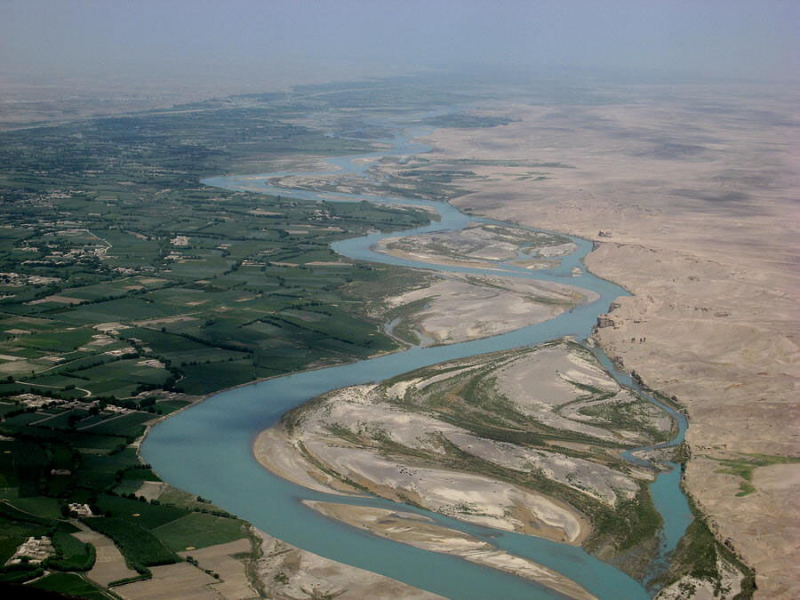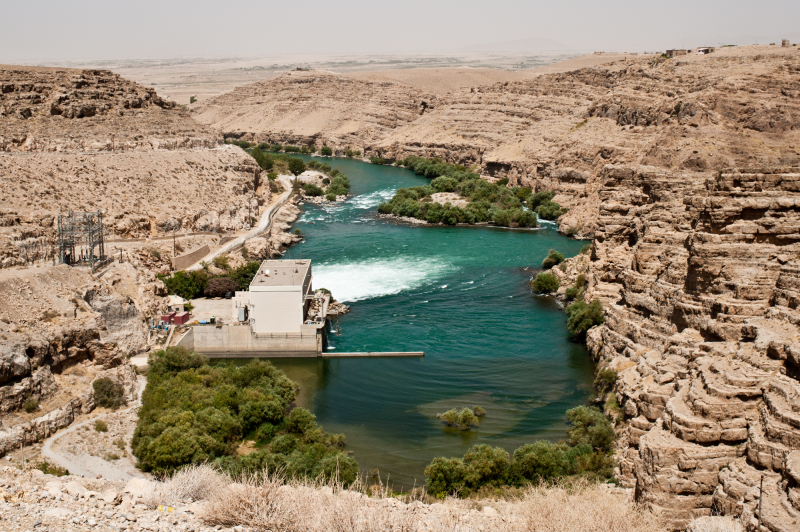Helmand

The Helmand River flows wholly within Afghanistan's boundaries for 715 km. The river begins in the Baba Range in East-Central Afghanistan, runs southwestward into the country, changes course to a brief northward flow, and empties in the Helmand marshes on the state's southwest border with Eastern Iran. The Tarnak and Arghandab are two of the river's many tributaries. A reservoir was created along with the river's flow at Kajak to provide water for agricultural programs and to manage floods. Another dam directs the flow of water to a canal.
The river provides an ideal habitat for a huge number of migrating birds. The main threat to the river is Afghanistan's pursuit of water resource development projects. The building of the Kamal Khan Dam on the river's lower sections, as well as the renovation of the Kajaki Dam, are damaging the river's natural flow and contaminating it.
The Avesta refers to the Helmand valley region as the Aryan realm of Haetumant, one of the first centers of the Zoroastrian faith in what is now Afghanistan. However, by the late first century BC and early first millennium AD, the predominance of Hindu and Buddhist populations in the Helmand and Kabul valleys had caused Parthians to refer to it as White-India.
Total Length: 715 miles









